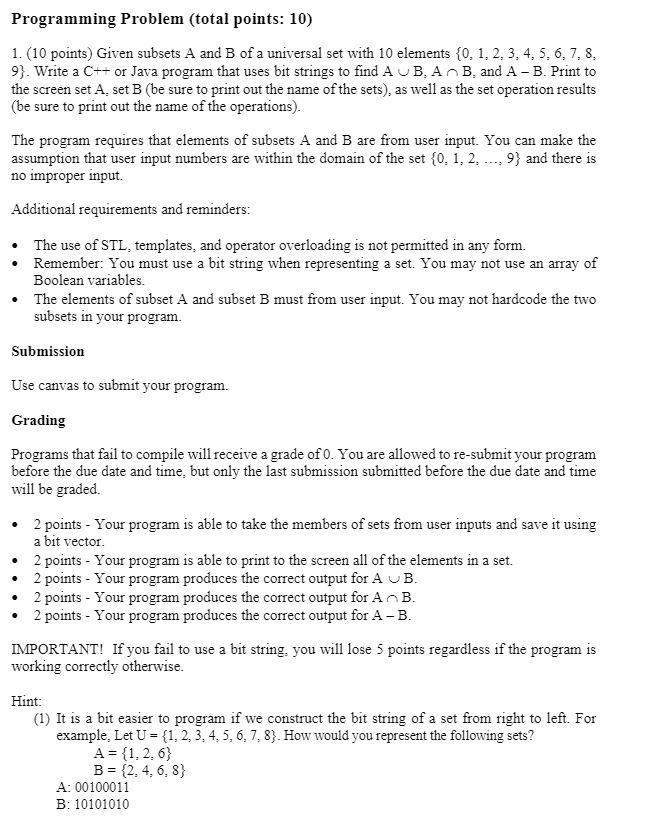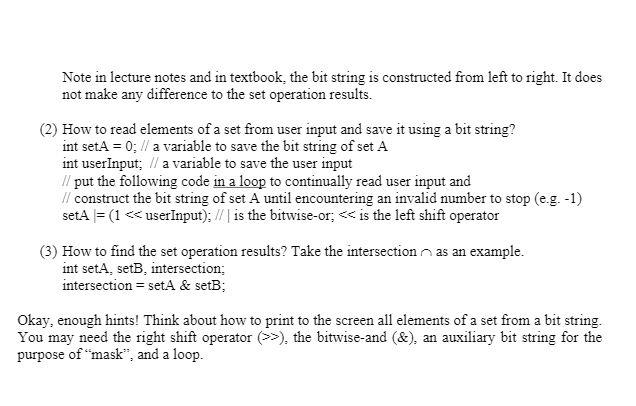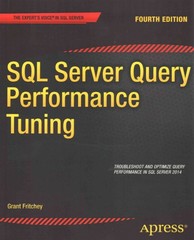

Programming Problem (total points: 10) 1. (10 points) Given subsets A and B of a universal set with 10 elements {0, 1, 2, 3, 4, 5, 6, 7, 8. 9}. Write a C++ or Java program that uses bit strings to find A BA B. and A - B. Print to the screen set A, set B (be sure to print out the name of the sets), as well as the set operation results (be sure to print out the name of the operations). The program requires that elements of subsets A and B are from user input. You can make the assumption that user input numbers are within the domain of the set {0, 1, 2, ... 9) and there is no improper input. Additional requirements and reminders: The use of STL, templates, and operator overloading is not permitted in any form. Remember: You must use a bit string when representing a set. You may not use an array of Boolean variables. The elements of subset A and subset B must from user input. You may not hardcode the two subsets in your program. Submission Use canvas to submit your program. Grading Programs that fail to compile will receive a grade of 0. You are allowed to re-submit your program before the due date and time, but only the last submission submitted before the due date and time will be graded 2 points - Your program is able to take the members of sets from user inputs and save it using a bit vector 2 points - Your program is able to print to the screen all of the elements in a set. 2 points - Your program produces the correct output for A B. 2 points - Your program produces the correct output for AB. 2 points - Your program produces the correct output for A-B. IMPORTANT! If you fail to use a bit string. you will lose 5 points regardless if the program is working correctly otherwise. Hint: (1) It is a bit easier to program if we construct the bit string of a set from right to left. For example. Let U = {1, 2, 3, 4, 5, 6, 7, 8). How would you represent the following sets? A = {1,2,6} B = {2. 4, 6, 8) A: 00100011 B: 10101010 Note in lecture notes and in textbook, the bit string is constructed from left to right. It does not make any difference to the set operation results. (2) How to read elements of a set from user input and save it using a bit string? int setA = 0; // a variable to save the bit string of set A int userInput; // a variable to save the user input // put the following code in a loop to continually read user input and // construct the bit string of set A until encountering an invalid number to stop (e.g.-1) setA = (1 userInput); // | is the bitwise-or; >the bitwise-and (&), an auxiliary bit string for the purpose of "mask", and a loop. Programming Problem (total points: 10) 1. (10 points) Given subsets A and B of a universal set with 10 elements {0, 1, 2, 3, 4, 5, 6, 7, 8. 9}. Write a C++ or Java program that uses bit strings to find A BA B. and A - B. Print to the screen set A, set B (be sure to print out the name of the sets), as well as the set operation results (be sure to print out the name of the operations). The program requires that elements of subsets A and B are from user input. You can make the assumption that user input numbers are within the domain of the set {0, 1, 2, ... 9) and there is no improper input. Additional requirements and reminders: The use of STL, templates, and operator overloading is not permitted in any form. Remember: You must use a bit string when representing a set. You may not use an array of Boolean variables. The elements of subset A and subset B must from user input. You may not hardcode the two subsets in your program. Submission Use canvas to submit your program. Grading Programs that fail to compile will receive a grade of 0. You are allowed to re-submit your program before the due date and time, but only the last submission submitted before the due date and time will be graded 2 points - Your program is able to take the members of sets from user inputs and save it using a bit vector 2 points - Your program is able to print to the screen all of the elements in a set. 2 points - Your program produces the correct output for A B. 2 points - Your program produces the correct output for AB. 2 points - Your program produces the correct output for A-B. IMPORTANT! If you fail to use a bit string. you will lose 5 points regardless if the program is working correctly otherwise. Hint: (1) It is a bit easier to program if we construct the bit string of a set from right to left. For example. Let U = {1, 2, 3, 4, 5, 6, 7, 8). How would you represent the following sets? A = {1,2,6} B = {2. 4, 6, 8) A: 00100011 B: 10101010 Note in lecture notes and in textbook, the bit string is constructed from left to right. It does not make any difference to the set operation results. (2) How to read elements of a set from user input and save it using a bit string? int setA = 0; // a variable to save the bit string of set A int userInput; // a variable to save the user input // put the following code in a loop to continually read user input and // construct the bit string of set A until encountering an invalid number to stop (e.g.-1) setA = (1 userInput); // | is the bitwise-or; >the bitwise-and (&), an auxiliary bit string for the purpose of "mask", and a loop








